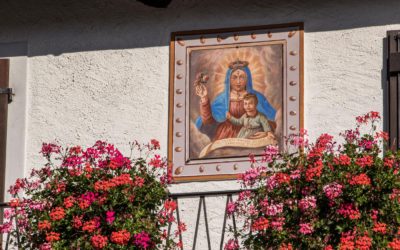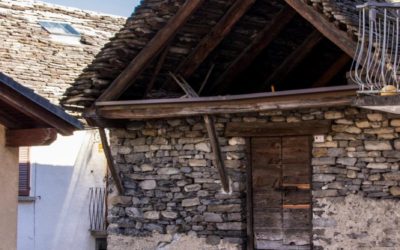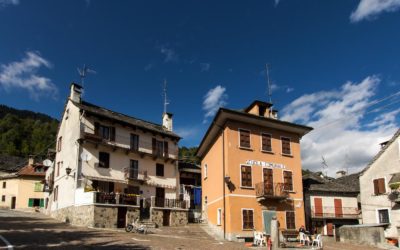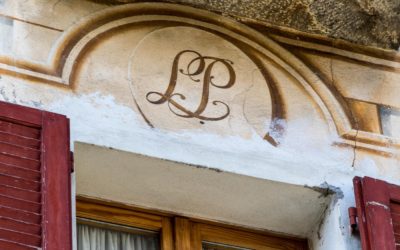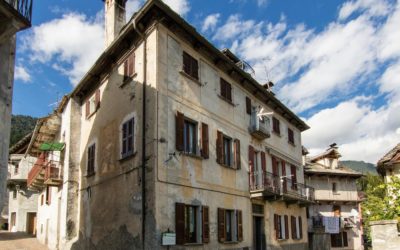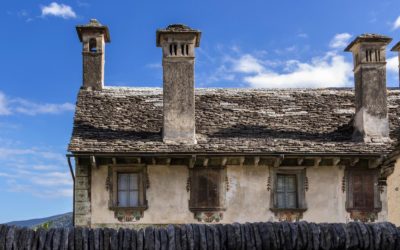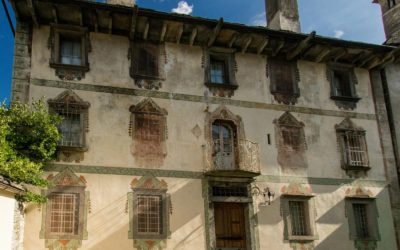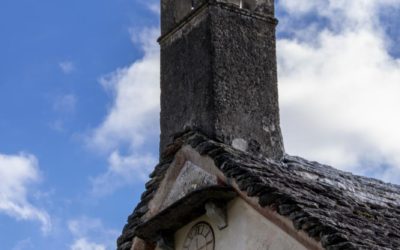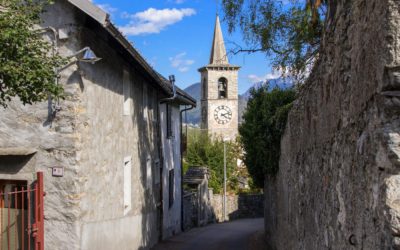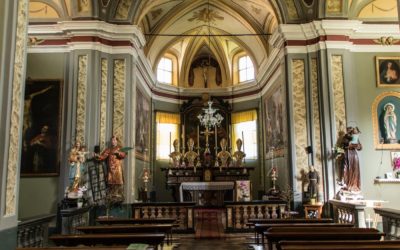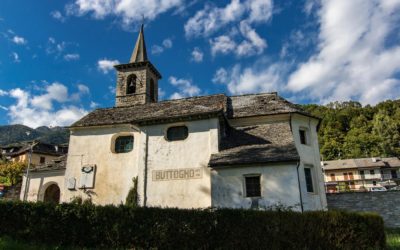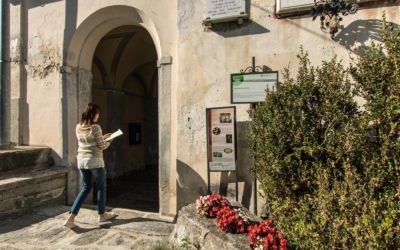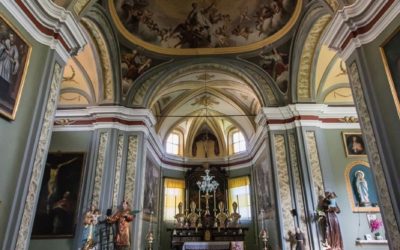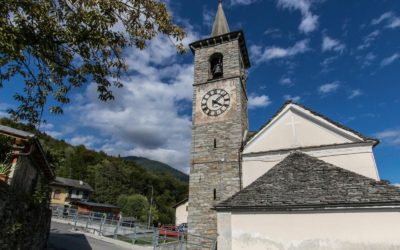Buttogno is a small hamlet of Santa Maria Maggiore. Its development followed a precise plan: in the north part of the village all the rural houses were built, while on the south side all the noble villas with their gardens were erected. In the centre of this rural village, you can admire ancient stables and cowsheds made of stone, as well as noble houses like casa Peretti (owned by the famous painter) or the original casa Simonis.
1.
IN “PLATEA”
The public square of the village was the place where “Consiglio Generale di Vicinanza” met in the 17th century, after the Holy Mass, in order to discuss about the administration of the village. The Municipality was governed by two consuls. This rank was held in turn by all the “vicini” – the inhabitants of the village, who were the real owners of the territory.
2.
CASA PERETTI
The house shows the features of neoclassical architecture with false relief, mouldings and false perspectives. It was bought by the uncle of Carlo Giuseppe Peretti’s wife; then it was restored and decorated inside before the birth of their son, Lorenzo Peretti (1774-1851).
In 1803 Lorenzo restored the house once more and painted the fresco on the west façade, depicting the Virgin Mary with Saints. Unfortunately this fresco has almost faded.
Lorenzo Peretti attended the Academy of Fine Arts in Turin; he was a student of Pécheux and he became one of the restorers of the royal palaces.
In Valle Vigezzo, where numerous of his frescos can be admired, he found two generous patrons in the Borgnis-Bolongaro family, who commissioned him different works.
3.
CASA SIMONIS
Between the 12th and the 15th century the Simonis with other six families from Craveggia founded Santa Maria Maggiore. In 1618 they became members of the so-called “vicinato” in Buttogno. In 1704 Bernardino De’ Simonis bought the house from Johannes Jacomalis. In the 16th century the building looked like a fortress, with few little windows protected by grilles. In 1715 the property was transferred to his daughter-in-law, Maria Elisabeth de’ Rubeis. In 1794 Bernardino’s great-grandchild, Giovanni Battista – who had been working as a banker in Germany for more than 40 years – restored the house, introducing elements of the Italian Renaissance (triangular gable, mascaron ornaments) and the German Rococo’ (green and gold colours).
4.
THE CHURCH OF SAINT LAWRENCE
In 1652 the Church was built on the site where the ancient Oratory stood in 1421. The dome and the presbytery were frescoed by the painter Lorenzo Peretti (1774-1851). The body of the building was frescoed by Carlo Giuseppe Peretti, following the cartoons by his father, Lorenzo.
The most precious work of this church is the oil painting by Daniele Crespi (1590-1630), representing Christ Crucified with Saint Francis from Assisi and Saint Charles Borromeo. It was a gift given by Caterina Rastellini.

